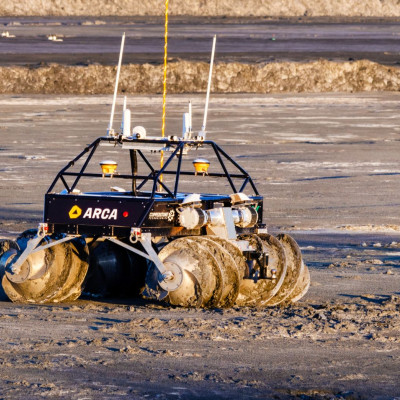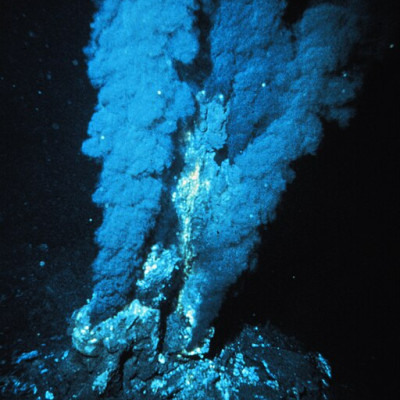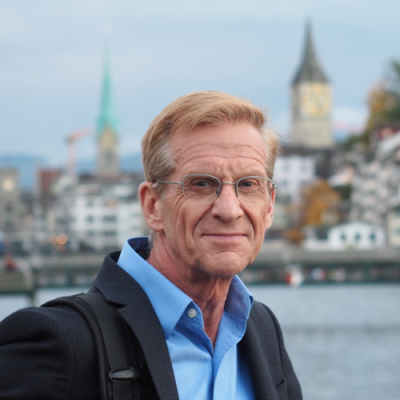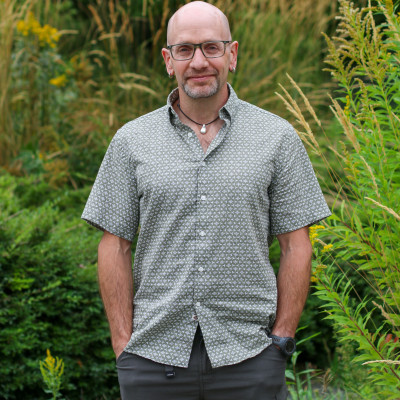News
Stay up-to-date with what's happening in EOAS
One mine's waste is another company's carbon capture solution
To achieve the global climate objectives set in the 2015 Paris Agreement, the Intergovernmental Panel on Climate Change asserts 10 GtCO2 will need to be captured annually between now and 2050, in addition to halting current emissions. One promising approach to remove carbon dioxide from the atmosphere is to speed up natural carbon sequestering processes…cue Tilly and Eddy.
Tilly and Eddy are two autonomous rovers working tirelessly to crush mine tailings on Mt. Keith, a nickel mine in the Western Australian desert. Nickel is mined from ultra-mafic rock that is rich in iron and magnesium minerals that, when exposed to air, react with carbon dioxide to form solid carbonates. During natural weathering and erosion processes, these reactions remove carbon from the atmosphere and lock it up in rock where it stays for millennia. Arca, a UBC spin-out company, is using Tilly and Eddy to accelerate this natural process. Tilly’s job is to till the mine tailings into a fine sand to maximize surface area for carbonate reactions. Eddy follows Tilly and uses eddy-covariance methods to monitor carbon dioxide drawdown rates. To-date, Arca’s pilot project at Mt. Keith is already sequestering carbon at a rate of 40,000 tons carbon dioxide per year, representing 11% of the mine’s total greenhouse gas emissions.
Nickel is a critical component of electric vehicle batteries. As we transition from fossil fuels to electric vehicle-based transportation, nickel mining is expected to expand drastically. This presents a serious sustainability challenge as nickel mining itself is environmentally intensive and involves fossil fuel emissions. Arca hopes to offset those emissions with its carbon capture technology. Given the extent of global mining operations and the fields of ultra-mafic mining tailings that already exist, there is significant potential for Arca to scale their operations to meet significant carbon sequestration objectives. The company is already one of 20 finalist teams competing for the Musk Foundation's $50 million grand prize, which will be awarded to a group that can permanently sequester 1,000 tones of carbon in a year and prove their potential to capture 1 billion tons per year.
Arca was founded three years ago through the entrepreneurship@UBC program by UBC Earth Oceans and Atmospheric Science Professor Dr. Greg Dipple and geologists Bethany Ladds and Peter Scheuermann. Since then, the company has won several prestigious awards including Startup of the Year in Foresight’s BC Cleantech awards and was labeled one of Canada’s 50 Most Investible Cleantech Ventures by Foresight Canada.
New release of the Treatise on Geochemistry, edited by Dominique Weis and Ariel Anbar
Geosciences encompasses an immense diversity of research fields studying Earth and other planetary processes. The diverse disciplines under the geosciences umbrella are united by geochemistry, which provides the analytical tools to examine past and present geological phenomena, quantify reservoir exchanges and establish absolute ages. Since its initial publication, The Treatise on Geochemistry has been an invaluable resource for academics and researchers. In the 10 years since the release of The Treatise on Geochemistry second edition, geochemistry has been reckoning with two fundamental developments in the field. First, the discovery of thousands of potentially habitable Earth-like exoplanets. Second, the scientific consensus is that we are now in the Anthropocene, a new era defined by humans’ dominant influence on the environment. These developments bring pressing new relevance to questions regarding the formation and evolution of habitable planets and the sensitivity of our own planet and others to human activity. The latest edition of The Treatise on Geochemistry, co-edited by UBC professor and director of the Pacific Centre for Isotopic and Geochemical Research Dominique Weis, has been entirely rewritten to incorporate the latest developments and to look ahead to the coming decade of innovation. With 145 chapters, the new edition is a comprehensive guide on the ”state-of-the-art" of geochemistry today.
In addition to Dominique Weis, three UBC EOAS members contributed to the latest edition as chapter co-authors. Shaun Barker, director of the Mineral Deposit Research Unit, co-authored the chapter 'Fluid-rock interaction: A mineral deposits perspective'. Anette von der Handt, a research associate at EOAS and Electron Microprobe specialist, co-authored the chapter 'Scanning electron microscopy, electron probe microanalysis, and electron backscatter diffraction in the geological sciences'. EOAS faculty Kendra Chritz authored the chapter 'Geochemical explorations of trophic interactions in the past and present: Beyond “who’s eating whom”. In addition to serving as the chief editor, Dominque Weis co-authored a chapter titled 'The geochemistry of metal contaminants in the environment'.
Access the full new edition of The Treatise on Geochemistry here, via the UBC library.
Bridging Science and Public Knowledge: two students expand understanding of seamount microbes
Read full article here: Exploring underwater mountains: Students add marine microbial hotspots to Wikipedia by Colleen McCoy
This spring, two science students at the University of British Columbia, Alia Kogiso (Integrated Sciences major with a focus on Environmental Chemistry, Ecology, and Structural Geology) and Alyssa Jung (biology major), brought a new, robust article to Wikipedia on Seamount microbial communities as their final project in Dr. Curtis Suttle’s EOSC 475: Marine Microbiology course. By carefully collecting, reviewing, and synthesizing existing literature, they showed how seamounts act as unique hotspots for microbial communities with great diversity and adaptability to extreme conditions, such as high pressure, low temperatures, and limited nutrient availability. Their article not only expanded knowledge but also filled a gap in public understanding of the critical role of seamount-associated microbes in marine nutrient cycling and ecosystem functioning.
“I loved this assignment because it allowed us to engage with a wider audience and develop skills in communicating science to the public, which I believe will be invaluable in a professional setting after graduation,” said Kogiso. “We hope that readers get a glimpse of the importance of microbes in an underexplored biodiversity such as seamounts,” said Jung.
During the last spring term alone, students in the Marine Microbiology course contributed 86K words to Wikipedia, creating 10 new articles and enhancing 35 existing articles, with their work reaching nearly half a million views. Over the years, the cumulative contributions from the course have grown to 436k words and 10.4 million page views, demonstrating how academic coursework can enrich public knowledge and broaden access to scientific information.
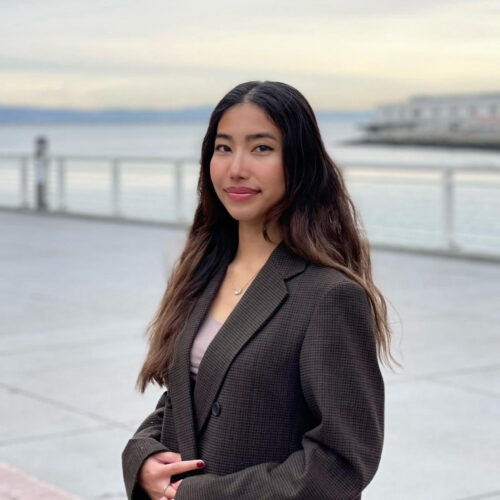
Alia Kogiso. Credit: Alia Kogiso
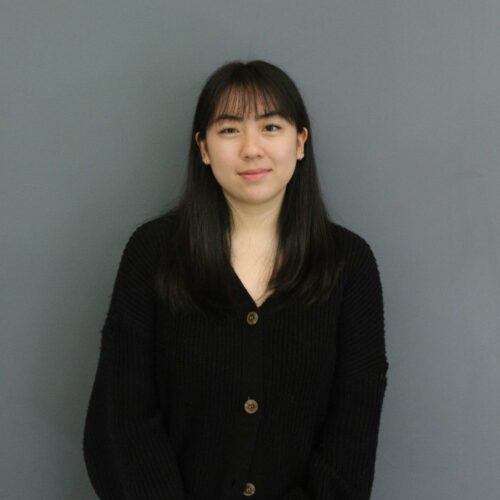
Alyssa Jung. Credit: Alyssa Jung
Congratulations to 2024 AGU Fellow, Dr. Doug Oldenburg
Dr. Douglas Oldenburg, emeritus Professor in Earth Oceans and Atmospheric Sciences and founder of the UBC Geophysical Inversion Facility, joins the 2024 AGU Fellowship Cohort for 2024. The AGU Fellowship is a prestigious award that recognizes excellence in Earth and Planetary Sciences. Dr. Douglas Oldenburg has contributed greatly to the field by developing inversion methods and applications to solve diverse geophysical problems.
In addition to the 2024 AGU Fellowship, Dr. Douglas Oldenburg has won numerous other awards for teaching and research. He is a recognized Fellow of the Royal Society, SEG Honorary Membership Recipient, and TeckCominco Senior Keevil Chair in Mineral Exploration. He is passionate about teaching and making geophysics accessible to all and has developed a number of open-source resources for students and educators of geophysics (available here).
Congratulations to Dr. Oldenburg on this latest well deserved achievement.
Earth’s mantle is less of a mosaic and more of a homogenous soup
Around the world, lavas erupting from volcanic hotpots have unique chemical compositions. Lava plumes in Hawaii, Iceland, and Samoa each have a distinct chemical signature. Conventional wisdom led researchers to believe these chemical signatures reflected the chemistry of their underlying mantle source, implying the mantle has a mosaic-like structure of variable chemical composition. However, new research led by Dr. Matthijs Smit, Associate professor and Canada Research Chair at the University of British Columbia’s Dept. of Earth Oceans and Atmospheric Sciences, tells a very different story. The research, published in the latest issue of Nature Geoscience, finds that the mantle is actually quite uniform and differences in chemical composition between hotspot plumes develop as emerging magma interacts with different overlying rock types. In a way, hotspot lavas are much like varieties of soup with different ingredients, but made from the same stock.
The breakthrough article titled “A common precursor for global hotspot lavas” re-envisions our understanding of Earth’s mantle and provides us with new insights into the global cycle of elements, our planet’s formation and the evolution of the mantle. Previously, models of the mantle had to include ‘primordial reservoirs’ to be able to explain some of the chemical data. However, these geographically isolated pools clashed with our understanding of global mantle convection. The new paradigm offers a simple explanation for the observations aligned with mantle convection theories. A chemically uniform mantle with magma that is transformed during its rise to the surface can also explain the vast difference between oceanic and continental basalts, including diamond bearing kimberlites.
Together with co-author Dr. Ellen Kooijman of the Swedish Museum of Natural History’s Department of Geosciences, Dr. Smit analyzed the trace-element and isotope composition of hotspot lavas from oceanic hotspots around the world. The chemical tracers revealed the melts all had highly consistent source material. Without being able to directly sample the Earth’s mantle, these lava samples offer us the closest glimpse of the magma stew below us.
Click here to read more about Dr. Smit and Dr. Kooijman’s findings in their own words and find the original research article here.
Dr. Mark Jellinek elected as an AGU Fellow
Dr. Mark Jellinek, Professor in the Department of Earth, Ocean and Atmospheric Sciences, was elected as an AGU Fellow, joining a distinguished group of 54 individuals in the 2024 Class of Fellows. AGU is the world's largest Earth and space science association and AGU Fellows are bestowed annually to a select number of individuals who have made exceptional contributions. Since its inception in 1962, less than 0.1% of AGU members have been selected as Fellows each year.
AGU Fellows are recognized for their scientific eminence, demonstrated through breakthroughs, discoveries or innovations that advance the Earth and space sciences. Fellows act as external experts, advising government agencies and other organizations outside the sciences upon request. Dr. Jellinek was selected for their exemplary leadership and outstanding scientific achievements, which have significantly advanced our understanding of various topics, including magmatic and volcanic processes and hazards, geodynamics, long-term climate change, surface processes and the evolution of Earth and other rocky planets.
Learn more about Dr. Jellinek and his research:
